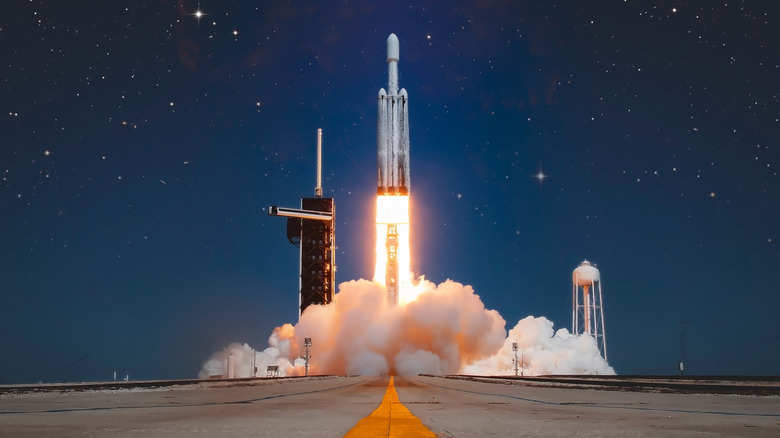Interested In Seeing The Next SpaceX Launch? Here's What We Know About When And Where It Is
Less than a week after SpaceX launched a Starlink satellite deployment mission, Elon Musk's space transport company is gearing up for another Falcon 9 launch, which will mark the company's first mission for October 2025. Scheduled to lift off from Space Launch Complex 4 East (SLC-4E) at Vandenberg Space Force Base in California on Friday, October 3, at 6:00 AM PDT (13:00 UTC), the mission, designated Starlink Group 11-39, is assigned to carry 28 Starlink V2 Mini satellites into low Earth orbit at an altitude of approximately 595 kilometers, inclined at 53 degrees.
Despite the mission's sequence number, this will be the 15th launch dedicated to this particular orbital shell. The satellites are part of Musk's megaconstellation project, which seeks to boost the performance and coverage of Starlink, dubbed the next frontier in internet technology. As of late, Starlink has 8,460 active satellites traversing around the planet. As part of the upcoming mission, the first-stage booster will attempt to land at an autonomous droneship stationed in the Pacific Ocean, called "Of Course I Still Love You."
SpaceX has warned that sonic booms might be heard across Santa Barbara, San Luis Obispo, and Ventura counties during the launch and landing sequence, which will be live-streamed on SpaceX's website, X (formerly Twitter), and the new X TV app. The live stream will commence about five minutes before the liftoff, but as with other SpaceX launches, the schedule of Friday's mission is subject to change, depending on weather conditions and other factors.
Here's where to look if you want to keep track of SpaceX's launch activities
Apart from the frequent Starlink satellite deployment missions, Elon Musk's space company is also preparing for its next important SpaceX missions. Currently, the company is set to conduct its fifth test flight of Starship, the world's most powerful rocket to date. Tentatively, SpaceX is targeting an October 13 test flight from SpaceX's Starbase facility in South Texas. This event is another crucial step toward Musk's long-term ambition of sending humans back to the Moon and eventually to Mars. The previous Starship test in August was a success, while the test flight in June ended in an explosion. Musk has since emphasized plans to accelerate the testing rhythm now that regulatory approvals are in place.
To stay updated on SpaceX's Starlink and Starship-related activities, the best place to monitor is SpaceX.com. The site features an active launch schedule that includes upcoming missions, completed flights, and real-time countdowns for scheduled events. Live broadcasts are linked directly on the homepage, along with mission recaps and recovery details. You can also follow @SpaceX on X or tune in through the X TV app on supported devices for quick access to livestreams. Meanwhile, to locate and keep track of the Starlink satellites, you can use certain tools like Satellite Tracker, SkySafari, and Stellarium, or visit the Find Starlink website.

